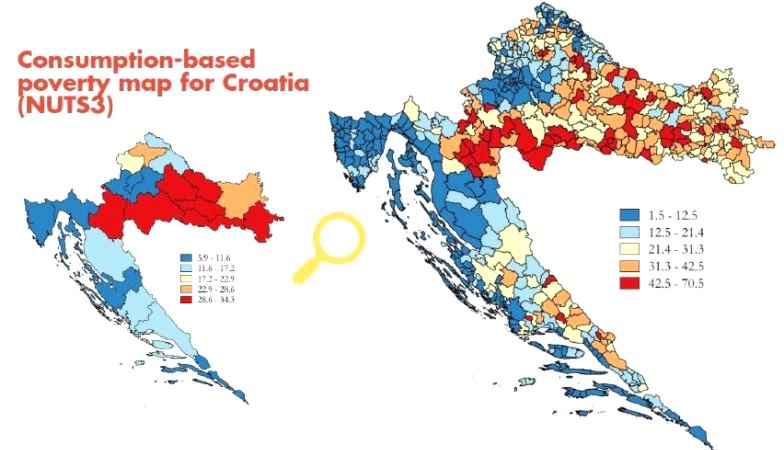As a European Union (EU) member state and a member of the United Nations (UN) family, Croatia is committed to combating poverty and social exclusion. Achieving that goal depends on developing the right policies and programs and targeting them effectively, which requires having detailed knowledge on the disparities in living standards within the country.
To help policy makers, including the Ministry of Regional Development and European Union Funds (MRDEUF), and the Ministry of Demography, Family, Youth and Social Policy (MDFYSP), acquire the knowledge on the geographical distribution of poverty, at the municipal level, the World Bank and the Croatian Bureau of Statistics (CBS) developed Income and Consumption-Based Poverty Maps for subnational levels.
These Poverty Maps consist of a detailed geo-referenced database that provides estimates of poverty data at the level of counties, cities and municipalities, while previously this data was only available at the national level.
The use of the poverty maps can also help policy makers achieve considerable progress in poverty reduction within limited available resources. They can be an additional component in their tool kit when trying to decide where limited funds can be distributed among the population that needs assistance.

